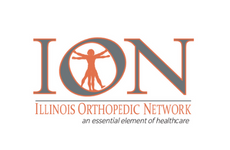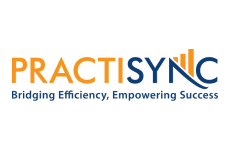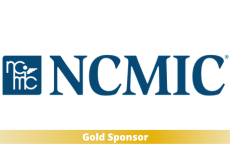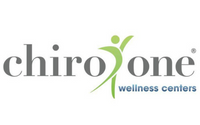
Avoid Billing Chaos: Separate Your Payers Wisely
Brandy Brimhall shares how identifying payer types early prevents costly billing errors, protects cash flow, and ensures timely collections. Avoid missteps that delay payment or cause denials.
Referenced Link:
Transcript:
Marc:
So we’re doing another video this week with Brandy Brimhall, COO, with Practicsync, and if you’d like to find out more about practicing, we’ll drop some links down below, and you can check that out there. But most importantly, we’ve been talking about some of the things that happen at the clinic level, that can happen early on in a patient’s life at your clinic, that can help you ensure that your reimbursement is happening, that your AR is low, and that your collections continue at a regular basis. One of the things Brandy that you and I have talked about, and I don’t see this as much, and it doesn’t mean that we don’t get the questions, but it’s hard to identify once they come to me, but seeing the difference between the clinic or between the different payers, right, and what is a good practice for setup. But you’ve talked about this a little bit. Talk to us about how this impacts processing and claims in cash flow.
Brandy:
Yeah, so as released, you know, Medicare and Medicare Advantage are the easiest ones to address in this particular topic, but certainly all the way upstream. If we’re not properly identifying our payers, properly setting them up, then we’re going to find ourselves misrouting claims, running risk of not obtaining prior authorization if it’s required, because we don’t know that it’s this payer instead of that payer, perhaps running into, I don’t remember if I mentioned timely filing, running into that miscommunicating with our patients, all of those different things that create downstream issues that impact our collections, our billing flow, our AR, our rejected claims, our denied claims, and all of those different things related to the revenue cycle system. So I am a big believer in identifying interferences in our revenue cycle system that we can control, identify, minimize, and remove.
Marc:
So now are you talking about things, and let’s just use some, some by name, but like the difference in maybe a commercial United Healthcare versus United Healthcare, Medicare Advantage, or Blue Cross commercial and Blue Cross Medicare Advantage, or whatever the case is, that is that kind of what you’re thinking?
Brandy:
That is, that’s one of the common themes that we have where we’re misidentifying the payers, or misidentifying the type of payer or plan, and ultimately causing ourselves disruption in our billing processes all the way from the top of the stream. So if I take it all the way from the moment the patient comes in to the office and hands us their cards, we already know that our Medicare patients tend to hand us everything that’s in their wallet or their bag. The reason that they do that is because they may have opted for a Medicare replacement. So Medicare Part C, Medicare Advantage, Medicare replacement are all synonymous with one another. The patient has chosen to replace part of their Medicare coverage with something else, for whatever reason they did. They still have their Medicare card because they still need it, probably for hospital benefits and maybe for other things. So what they don’t know is which card applies to you in your office, so they give you everything. That means, as the clinic, then you have the responsibility of determining, is this Medicare or is this Medicare Advantage? What not to do is guess or just proactively enter the Medicare as the primary because it’s easy to identify Medicare typically as primary insurance, and that’s a common mistake we make, and then we get these rejections saying the patient isn’t identified. And we tend to think Medicare is making the mistake, when, in reality, we’re billing Medicare instead of Medicare Advantage.
So what we need to do is pay attention when the patient hands us their cards, if it’s a Medicare Advantage plan, if it’s Blue Cross, Cigna, United Healthcare, Aetna, any of those you will see on the face of the card, and typically on the reverse of the card to something that references Medicare or Medicare Advantage. When you see that, that’s immediately telling you this is a Medicare Advantage plan. What that means to you is you need to make sure that you know which one is active for your types of services. There are two ways to do that. One you can log into your Medicare portal, type in the Medicare beneficiary identifier on the face of the Medicare card, and it will tell you if Medicare is currently active or if another plan is active as primary instead for this type of service. The other thing you can do is simply just go to your portal or get on the phone and call to verify the benefits of that Medicare Advantage plan, you’ll get the effect date information, the coverage details, and so forth, to confirm which one is actually active for your types of services. So that’s really step one to make sure that you’re set up for routing your claims properly, and it matters a lot, because our Medicare Advantage time, or their timely filing, goes by those commercial plans. Some of them are 12 months. Some of them are 180 days. Some of them are as little as 90 days, which gives us a very narrow window to be able to get paid if we don’t catch that upstream.
The other challenges, of course, like our UnitedHealthcares and many of our Humanas, is they require prior authorization. In that event, if we don’t know that we’re billing the wrong insurance or the wrong coverage, then we miss that window of opportunity to obtain that prior authorization, and we’re not going to get paid, because those payers aren’t going to allow a retroactive authorization almost ever. So really important for a lot of reasons, to pay attention to detail, all the way upstream, and really most of this, you could tell at a glance and take the appropriate action steps to save yourself a lot of agony and lost money downstream.
Marc:
Yeah, and I think what’s really interesting is one of the key things I want to hone in on, because sometimes we set things up and we just set them up in our systems and then let them ride. But you bring up a really good point, that if you specifically, even though everything seems like the same, the mailing address is the same, or for the insurance carrier, right? That the submission numbers are the same, everything seems to be the same between a commercial and a Medicare Advantage from time to time, right? But, it’s not the same, and so the recommendation to ensure that your billing practices are done well, in your software is to identify them separately, even though everything seems to be the same, I think you you put it great United Healthcare Commercial and then United Healthcare, Medicare Advantage, and same thing with each of the other carriers.
The other thing I want to point out that you said that I think is super important as well, is that benefit verification process in regards to this specifically, and identifying the specific plan that is active for that particular patient. Because of the volatility right now of the Medicare Advantage world, where we see a lot of transitions, right we see a lot of movement of plans. Recently, Blue Cross, Blue Shield, purchasing all of Cigna Medicare Advantage has created disruptions. I just talked to recently, a friend of mine in New York, who is there New York is having some problems because of that transition, and because, you know, how are we going to get this nailed down? And it goes back to some of our previous conversations in regards to in and out-of-network requirements. It was one thing for Cigna, and now it’s something different now that now that HCSC or Blue Cross, Blue Shield of Illinois, but HCSC is their parent. Now that they own them in that book of business, everything’s changed in that networking. So all of that to say it’s important actually to go through both of those types of things, proper setup and benefit verification. In regard to understanding the differences between these plans.
Brandy:
Absolutely, it’s important to know which plants and products we’re enrolled with. And as far as proper setup, what I like to do personally is to set up my Blue Cross, my Cigna, Aetna, whatever the commercial plan is. This is my commercial carrier in the software. It routes to wherever, and this is my Blue Cross, Medicare Advantage, Cigna Medicare Advantage, United Healthcare, Medicare Advantage, and so on as separate payers, even though those claims are likely to wrap most in most cases, route all to the same place. From the billing side, having done this for many years myself, it helps me because I review claims before I submit them. So if I’m able to look at claims and see this is Medicare Advantage. We need to keep in mind that our Medicare Advantage plans, by and large, follow many of the Medicare modifier guidelines. We’re not allowed to blanket apply modifiers across the board and hope that everything goes and processes correctly. We’re going to wreak havoc for ourselves if we do that. So we have to follow modifier guidelines and coding guidelines for specific types of plans.
So having UnitedHealthcare and United Healthcare Medicare Advantage set up as separate payers helps me in billing to identify this to make sure that the modifiers are applied properly before the claim goes out, because otherwise we could run into a rejection, or, most likely, a denial for non covered services, when in reality it’s a covered service, but I’ve missed a modifier. There’s a coding error. So doing that is really helpful. The other thing with most of our payers, like I mentioned, is the claims do route to the same place. However, United Healthcare is one of those payers that they do have separate routing for many of the Medicare Advantage plans, and that’s going to be helpful for you to track too, because they’re not going to if you route to their 87726, their most common routing department or for processing, and that’s the wrong one, they don’t forward it to the correct processing department. They won’t do anything. You won’t receive a letter back. So what you need to do is make sure you’re routing your claims properly, set up the separate routing for that payer, so that, you know, again, you have the confidence that your claims are getting to the right place for the correct processing. So I do like to set them up as separate payers. Just helps to make things cleaner. And remember, we have timely filing on all of these that we have to be able to stay on top of. And I really think, you know, if you just keep dumping debris into your revenue cycle system, it’s going to be ultimately impossible to ever clean it up and really have a good handle on it, to maintain it. All of these things that we’re talking about in these different sessions that we’re meeting and discussing helps to clean up those things, remove some of that debris from the revenue cycle system, saving time, making it faster to get paid, making it less stressful, all good.
Marc:
Yeah, in the software world, they call it garbage in, garbage out, right? And I think you hit on that, and it’s super important. We really strongly believe that doctors, you provide a good and valuable service, and you deserve to be paid for it, and so we want to find and make sure that we equip you with the information that you need to be able to improve your revenue cycle management processes that you include you know that you improve your your cash flow, that you improve your collections, and that you are getting paid for those valuable services that you render and that you provide to your patients and as you’re bringing them back to health. So hopefully this helps you out, and we’ll catch you next week.

















